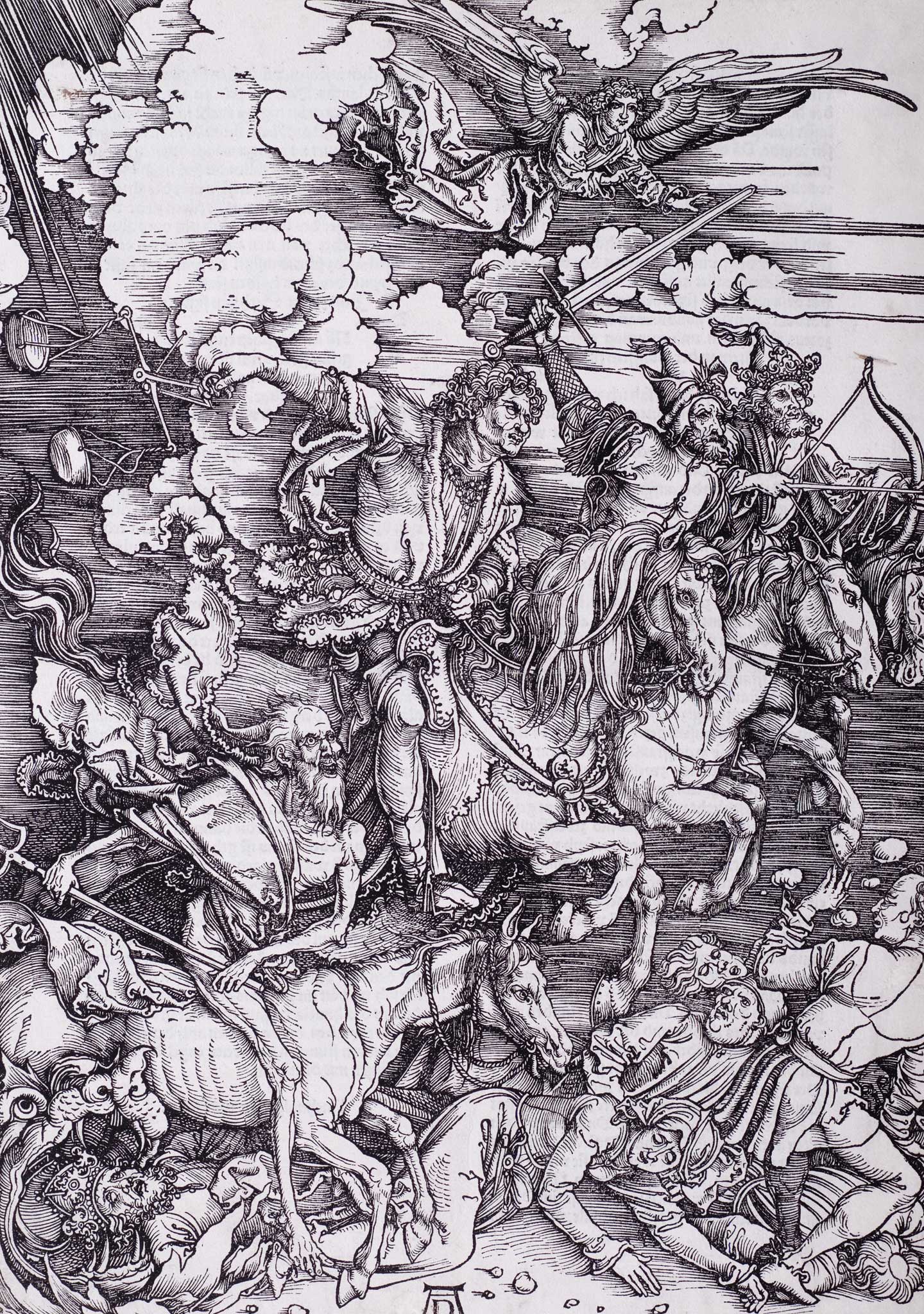Great works: The Four Horsemen of the Apocalypse (c.1496-8) by Albrecht Dürer
Whitworth Art Gallery, Manchester

Your support helps us to tell the story
From reproductive rights to climate change to Big Tech, The Independent is on the ground when the story is developing. Whether it's investigating the financials of Elon Musk's pro-Trump PAC or producing our latest documentary, 'The A Word', which shines a light on the American women fighting for reproductive rights, we know how important it is to parse out the facts from the messaging.
At such a critical moment in US history, we need reporters on the ground. Your donation allows us to keep sending journalists to speak to both sides of the story.
The Independent is trusted by Americans across the entire political spectrum. And unlike many other quality news outlets, we choose not to lock Americans out of our reporting and analysis with paywalls. We believe quality journalism should be available to everyone, paid for by those who can afford it.
Your support makes all the difference.The world – the world, that is, as seen through the prism of the feverish imaginings of man – has often believed itself to be on the brink of an apocalypse, and never more so than at the turn of a new century or, better still, a new millennium – in spite of the fact that chronology itself is man-made.
Think of the acute anxieties that stalked the news floors of the media at the turn of the second millennium, for example, when many shrill, not-so-much-in-the-know commentators predicted the wholesale collapse of the world's computers systems, and tinned food was stock-piled in the outhouses of ageing hippies in upstate New York. Nothing happened at all. Apart, that is, from universal rejoicing – to the accompaniment, worldwide, of the glorious sputtering of fireworks.
The idea of apocalypse itself has been made all the more vivid by Revelations, the very last book of the Bible, which contains scene after scene of momentously illogical happenings, implacable tales of the Last Days, terrible warrings before the Second Coming is finally upon us, when the sheep are divided from the goats and all is at peace at last. These visions – once believed to be the work of the Apostle John, Jesus's most beloved disciple – have been seized on by artists, theologians and doom-mongers of various stripes down the centuries to warn us of imminent catastrophe.
Here we have a version by the brilliant Nuremberger Albrecht Dürer, one of an entire suite of woodblocks created at the turn of the 16th century, yet another potentially apocalyptic moment full of war, rumours of war and doctrinal conflict. It is on display until 1 September at the Whitworth Art Gallery in Manchester amid many other wonderful things from their permanent collection, including Goyas, De Chiricos and Picassos. This too seems to be a terrible warning of sorts, driven by politics, religion and fear of what an unknowable future might bring down upon the heads of the godless. What we see, furiously visually enacted here, was, according to the Bible, described on a scroll in the keeping of Jesus, who sits enthroned. A lamb with seven horns and seven eyes seizes that scroll, breaks its seal, and reads...
The tale tells of four horsemen, representing war, plague, death and famine – and here they are thunderously driving across from left to right, over the poor specimens of common humanity who are being crushed beneath the hooves of the wildly stampeding horses. All descends in such a rush, such a terrible fury – which reminds us of Jesus's admonishment to be forever watchful because you never know at what hour doom many strike. Three of the horsemen have grizzled beards. The beard of Death (he with the slackened flesh almost hanging from those painfully thin limbs) is flame-like and Blakean. He prepares to lash out with a trident. Another has a raised sword, a third a drawn bow.
As always with Dürer, the punctilious attention to detail and the sureness of line are astonishing. Best of all is to see this image blown up in reproduction. Then you miss nothing of all its complexity. Everything is perfectly physically realised, and yet it is a realisation of pure, Bible-driven flights of fancy.
About the artist: Albrecht Dürer (1471-1528)
Albrecht Dürer, the greatest graphic artist in the Western tradition, was also a mathematician and theorist who wrote on geometry, perspective and fortification. The third child of a family that eventually numbered somewhere between 14 and 18, his father was a successful goldsmith of Hungarian origins. Astonishingly precocious, he was apprenticed early and travelled widely (his painting is powerfully influenced by his sojourns in Italy).
Join our commenting forum
Join thought-provoking conversations, follow other Independent readers and see their replies
Comments